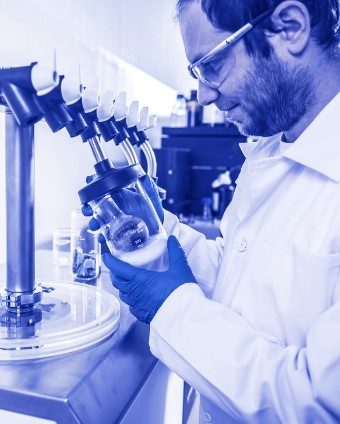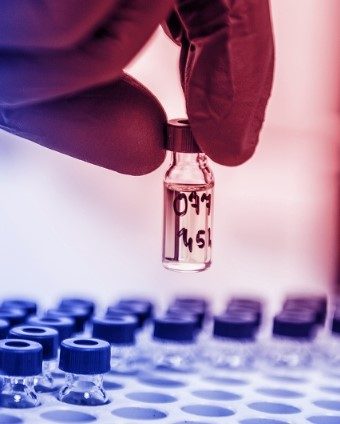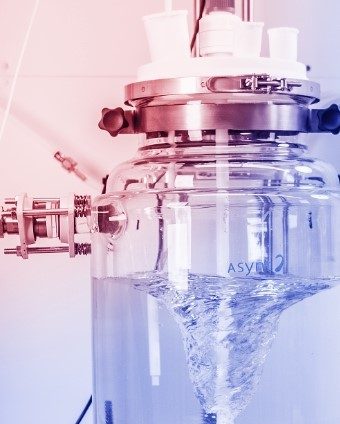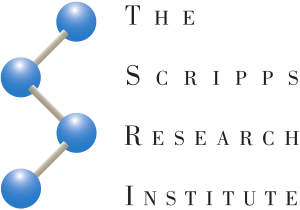Alaptide – history, biological activity and synthesis
Version in Czech is bellow the English version/ Verze v češtině se nachází pod anglickým textem
Alaptide
Many unique and interesting organic compounds were developed and synthesised by Czech and Slovak chemists. One of them is a molecule of Alaptide that is in the centre of attention due to its unique healing properties. We now have this molecule in stock.

Structure
The molecule of Alaptide (((S)-8-methyl-6,9-diazaspiro[4.5]decan-7,10-dione) ) is composed of two amino acids, L-alanine and cycloleucine, that are interlocked into a spirocycle. Its synthesis was inspired by another naturally occurring neuropeptide, L-Prolyl-L-leucylglycinamide, which is believed to increase the regenerative process in tissue. Unfortunately, this molecule is very unstable and degrades very quickly (compared to the spirocyclic structure of Alaptide).

Alaptide is a white crystalline compound that is very badly soluble in water (0.1104 g/100 mL), ethanol (0.1011 g/100 mL) or hexane (0.0024 g/100 mL). Alaptide possesses one centre of chirality, and relatively recently (2009), the absolute configuration was determined by X-ray powder diffraction and electronic circular dichroism.
History


The molecule of Alaptide was first synthesised in the 1980s by Evžen Kasafírek (Research Institute for Pharmacy and Biochemistry). Together with another scientist Václav Plaisner, they quickly recognised the unique healing properties of this remarkable compound. Even though the Alaptide was patented, it did not receive much attention.
This molecule came back to the attention of scientists after 2000 when Vladimír Král and Pavel Martásek combined their efforts and greatly improved the therapeutic effect and production of Alaptide. Since then, many scientific papers and patents have been published describing advances in this molecule.
Synthesis
There are several possible synthetic pathways towards Alaptide, many of which have been intensively optimised during the last years.
One of them uses protected L-alanine 1 that is reacted with ethyl chloroformate. The intermediate 2 is then further reacted with methyl 1-aminocyclopentane-1-carboxylate 3, giving methyl 1-(benzyloxycarbonyll -alanyl) aminocyclopentane- 1-carboxylate 4. Subsequent hydrogenation provides unprotected derivative 5 that undergoes intramolecular cyclisation leading to the desired final product, Alaptide.

Since Alaptide is used in cosmetics, medicine, or veterinary, the final purification and formulation are also essential.
Activity and benefits
Alaptide enables a significant stimulating effect of human diploid cells (LEP-19) without transformation changes in their morphology. This effect can be used in various areas of regenerative medicine, such as treating burn injuries, skin treatment etc.
Epidermal regeneration abilities of Alaptide was also proved on a number of tests using domestic pigs. It was found out that Alaptide causes a faster skin regeneration of various injuries.
Moreover, Alaptide is also used as a modifier of permeation through the stratum corneum (SC), the least permeable layer of skin. Even though Alaptide is almost insoluble in water (0.1104 g/100 mL), they are physical ways (such as milling with various emulsifiers and stabilisers) how to increase its solubility and, therefore, the ability of permeation.
This highly soluble modified Alaptide can be efficiently used as a transdermal permeation modifier, i.e. as pharmaceutical adjuvant (excipient), in pharmaceutical formulations, such as oleo-ointments, hydro-ointments, oleo-creams, hydro-creams, gels or transdermal therapeutic systems, where it influences the absorption/permeation of various compounds into the skin and/or through the skin, increasing their concentration at the place of administration and/or their systemic concentration.
Interestingly, it was originally developed and tested for its nootropic effects with possible oral administration.
Alaptide at Santiago Lab
At Santiago Lab, we have been working intensively on the research of this unique molecule. We managed to replicate the original synthesis and significantly improve it for our conditions and large scale preparation. Thanks to that, we can now synthesise this molecule in an excellent purity on a kg scale for more than a competitive price.
If you are interested in this molecule or this research, we are open to any questions or inquires. You can write an email to Krystof Sigut at krystof.sigut@santiago-lab.com or reach him on the phone +420 776 750 591.
Version in Czech
Alaptide
V nedávné minulosti bylo českými a slovenskými chemiky vyvinuto a připraveno mnoho unikátních a zajímavých organických sloučenin. Jednou z nich je také molekula Alaptidu, která v současné době získává značnou pozornost díky svým jedinečným léčivým vlastnostem. Tuto látku máme nově také v našem katalogu.

Struktura
Molekula Alaptidu ((S)-8-methyl-6,9-diazaspiro[4.5]dekan-7,10-dion) se skládá ze dvou aminokyselin, L-alaninu a cykloleucinu, které jsou vzájemně propojeny do spirocyklu. Jeho syntéza byla inspirována jiným přirozeně se vyskytujícím neuropeptidem, L-Prolyl-L-leucylglycinamidem, o němž se předpokládá, že zvyšuje regenerační proces ve tkáních. Tato přírodní látka je bohužel velmi nestabilní a rychle se rozkládá (ve srovnání se spirocyklickou strukturou Alaptidu).

Alaptid je bílá krystalická látka, která je velmi špatně rozpustná ve vodě (0,1104 g/100 ml), ethanolu (0,1011 g/100 ml) nebo hexanu (0,0024 g/100 ml). Alaptid má jedno centrum chirality a jeho absolutní konfigurace byla teprve nedávno (2009) určena pomocí rentgenové práškové difrakce a elektronického kruhového dichroismu.
Historie


Alaptidu poprvé syntetizoval v 80. letech minulého století Evžen Kasafírek (Výzkumný ústav pro farmacii a biochemii). Spolu s dalším vědcem Václavem Plaisnerem rychle rozpoznali jedinečné léčivé vlastnosti této pozoruhodné sloučeniny. Přestože byl Alaptid patentován, nedostalo se mu v té době příliš velké pozornosti.
Do centra pozornosti vědců se tato molekula vrátila po roce 2000, kdy Vladimír Král a Pavel Martásek spojili své úsilí a léčebný účinek i výrobu Alaptidu výrazně zdokonalili. Od té doby bylo publikováno mnoho vědeckých prací a patentů věnujících se výzkumu právě této látky.
Syntéza
Existuje několik možných syntetických cest k Alaptidu, z nichž mnohé byly v posledních letech intenzivně optimalizovány.
Jedna z cest využívá chráněný L-alanin 1, který reaguje s ethylchloroformiátem. Meziprodukt 2 pak dále reaguje s methyl 1-aminocyklopentan-1-karboxylátem 3, čímž vzniká methyl 1-(benzyloxykarbonyl -alanyl) aminocyklopentan-1-karboxylát 4 . Následnou hydrogenací vzniká nechráněný derivát 5, který podléhá intramolekulární cyklizaci vedoucí k požadovanému konečnému produktu, Alaptidu.

Vzhledem k tomu, že se Alaptid používá v kosmetice, lékařství nebo veterinární medicíně, je nezbytné i jeho konečné čištění a formulace.
Biologická aktivita a přínosy pro zdraví
Alaptid umožňuje výrazný stimulační účinek lidských diploidních buněk (LEP-19) bez výrazných změn jejich morfologie. Tento účinek lze využít v různých oblastech regenerativní medicíny, např. při léčbě popálenin, ošetření kůže apod.
Epidermální regenerační schopnosti Alaptidu byly rovněž prokázány na řadě testů s použitím domácích prasat. Bylo zjištěno, že Alaptid způsobuje rychlejší regeneraci kůže při různých poraněních.
Alaptid se navíc používá také jako modifikátor prostupu přes stratum corneum (SC), nejméně propustnou vrstvu kůže. I když je Alaptid ve vodě téměř nerozpustný (0,1104 g/100 ml), existují fyzikální způsoby (např. mletí s různými emulgátory a stabilizátory), jak zvýšit jeho rozpustnost, a tím i schopnost prostupu.
Tento vysoce rozpustný modifikovaný Alaptid lze účinně použít jako transdermální permeační modifikátor, tj. jako farmaceutické adjuvans (pomocnou látku), ve farmaceutických přípravcích, jako jsou oleomasti, hydromasti, oleokrémy, hydrokrémy, gely nebo transdermální terapeutické systémy, kde ovlivňuje absorpci/permeaci různých sloučenin do kůže a/nebo kůží, čímž zvyšuje jejich koncentraci v místě podání a/nebo jejich systémovou koncentraci.
Zajímavé je, že byl původně vyvinut a testován pro své nootropní účinky s možným perorálním podáním.
Zkušenosti s Alaptidem v Santiago Lab
V Santiago Lab na výzkumu této unikátní molekuly intenzivně pracujeme. Podařilo se nám zopakovat původní syntézu a výrazně ji vylepšit pro naše podmínky a přípravu ve velkém měřítku. Díky tomu nyní můžeme tuto molekulu syntetizovat ve vynikající čistotě v kilogramovém měřítku za více než konkurenceschopnou cenu.
Pokud vás tato molekula nebo tento výzkum zajímá, jsme otevřeni jakýmkoli dotazům či poptávkám. Můžete napsat e-mail Kryštofu Šigutovi na adresu krystof.sigut@santiago-lab.com nebo se s ním spojit na telefonu +420 776 750 591.
[vc_row][vc_column][insignia_section_heading title="Drop us a line" subtitle="We will respond as soon as possible, typically within 48 hours." align="text-center" c_margin_top="20" c_margin_bottom="20" add_icon="" font_weight="default" sub_font_weight="default"][contact-form-7 id="13965"][/vc_column][/vc_row][vc_row][vc_column][vc_empty_space height="80px"][/vc_column][/vc_row][vc_row][vc_column][vc_column_text][vc_row][vc_column width="1/1"][vc_column_text]
Reference
Rádl, S. (1990). Alaptide. Drugs of the Future. 15. 445-447. 10.1358/dof.1990.015.05.127620.
Kasafirek et. al., Synthesis and Antiproliferative Activity of Spirocyclic Cyclodipeptides, Derivatives of 1-Amino-1-cyclobutanecarboxylic Acid, Collect. Czech. Chem. Commun. 1993, 58, 2987-2993. doi.org/10.1135/cccc19932987
Jampílek J., Dohnal J. (2015) Alaptide as Transdermal Permeation Modifier. In: Dragicevic N., Maibach H. (eds) Percutaneous Penetration Enhancers Chemical Methods in Penetration Enhancement. Springer, Berlin, Heidelberg. https://doi.org/10.1007/978-3-662-47039-8_8
Nikifor Asatiani, Vít Novotný, David Lukáš, Petr Mikeš, A novel approach to studying the kinetics of release of Alaptide from Poly-ε-caprolactone nanofibers, Drug Deliv Sci Technol. 2021, 63, 102492. https://doi.org/10.1016/j.jddst.2021.102492.
OUR CASE STUDY
Scale-up to accelerate drug discovery
Our experience helped overcome development hurdles for potential cancer & mental health drugs.
Read moreEmpowering neuro research with pro-N6pA
Sigut Labs scaled up pro-N6pA production, simplifying AMPylation research & boosting accessibility.
Read moreADC development leaps with new linkers
Novel linker design expedited ADC advancement, leading to promising lead compounds faster.
Read moreLincomycin derivative scale-up
Over 30 g of the desired product with exceptional purity was obtained through our optimized procedure.
Read morePurifying 350 kg of vitamin K2 oil
Our innovative scale-up technology helped to reduce the client’s purification process from days to hours.
Read more
Custom synthesis
Providing for a custom synthesis of previously reported molecules using described synthetic procedures.

Contract research
Developing novel synthetic routes to provide undescribed compounds in organic, bioorganic, and medicinal chemistry.

Scale-Up
Helping you go from lab scales to an industrial scale by applying our cutting-edge instrumentation.

Our Experts


Partners & distributors











